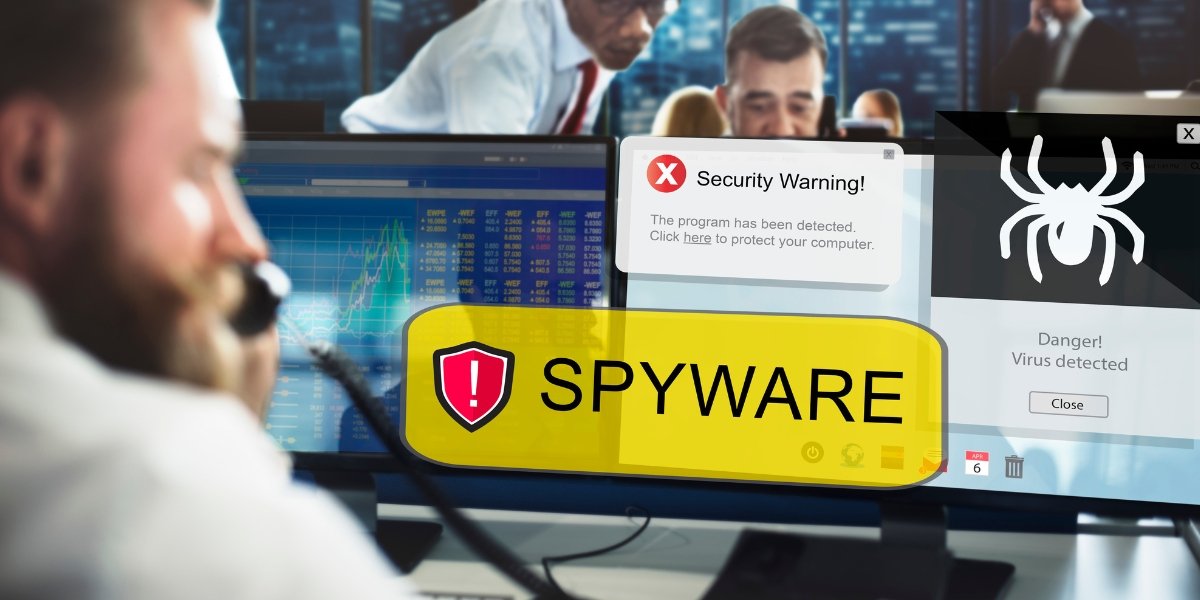Data is the lifeblood of any business, whether it's customer information, financial records, or sensitive company data. Ensuring that your business data is protected from cyber threats and hardware failures is crucial.
As cyberattacks become increasingly sophisticated, businesses must stay ahead of these threats. In this blog, we will walk you through the key strategies to protect your business data, focusing on internet security risks, their solutions, and ways to mitigate them!
Why Business Data Security Is Important
Ensuring the safety of your business data is more than just an IT issue; it's a vital aspect of business continuity. A single data breach can cost a business financially and in terms of reputation. Understanding the different types of cyber threats and how to prevent them is the first step toward safeguarding your company's assets.
Common Internet Security Risks for Businesses

1. Phishing Scams
Phishing scams are fraudulent attempts to obtain sensitive information by disguising oneself as a trustworthy entity, often via email. These scams can result in data breaches that compromise personal and company information.
2. Ransomware Attacks
Ransomware is a type of malware that locks down your system or data and demands a ransom to release it. Falling victim to ransomware can result in significant data loss if your business doesn't have proper backups in place.
3. Malware and Viruses
Malware and viruses can infect your business computers, slowing them down or even making them unusable. These programs often steal data or grant attackers access to your business network.
4. Insider Threats
While external attacks get the most attention, insider threats are equally dangerous. Disgruntled employees or contractors with access to sensitive data can misuse it, either intentionally or inadvertently.
5. Unsecured Networks
One major security risk is connecting to unsecured networks. When your employees use public Wi-Fi or an unsecured network, they expose your business to cyberattacks.
6. Outdated Software
Running outdated software exposes your business to known vulnerabilities that hackers can exploit. Cyberattackers are always looking for weaknesses in older systems, and not keeping up with the latest software updates can leave your business at risk.
Top 18 Ways to Mitigate Risk in Cybersecurity
Following is a list of all the solutions to common cybersecurity threats:
1. Keep Software and Hardware Up-to-Date
Cyber threats are constantly evolving, and protecting your business requires a proactive approach. One of the simplest yet most effective ways to protect your business from cyber threats is by ensuring that all software and hardware are up-to-date. Software companies regularly release updates to patch known security vulnerabilities, add new features, and improve performance.
Always install the latest updates as soon as they become available to keep your business systems secure. Outdated hardware may not support the newest security features, so consider upgrading older equipment to better respond to cyber threats.
2. Use Anti-Virus and Anti-Malware Software
Installing reliable antivirus and anti-malware software is critical to protecting your business from internet security risks. These programs scan and remove malicious software that could otherwise compromise your systems.
3. Implement a Secure File-Sharing Solution
Sharing sensitive information via unsecured methods, such as email, exposes your business to potential data breaches. A secure file-sharing solution encrypts data, ensuring that only authorized users can access the information, even if it is intercepted.
4. Enable Two-Factor Authentication (2FA)
Adding an extra layer of security through two-factor authentication is an effective way to protect accounts from unauthorized access. This security feature requires users to provide a second form of verification, like a code sent to their phone, before accessing sensitive data.
5. Train Your Employees
Proper training can help your employees recognize phishing scams, avoid suspicious links, and adopt better security habits. Make cybersecurity training a regular part of your business operations.
6. Use Strong, Unique Passwords
Strong passwords are a basic yet often overlooked defense against cyberattacks. Using a password manager makes it harder for hackers to gain access through credential-stuffing attacks, where they use known passwords from one breach to access other accounts.
7. Regularly Back Up Data
Backing up important data is essential to ensuring that your business can recover from cyberattacks or hardware failures. Implement a backup strategy that stores data in multiple locations, such as the cloud and external drives. Regular backups reduce the risk of permanent data loss and help recover from ransomware attacks.
8. Use a Virtual Private Network (VPN)
A VPN is a critical tool for businesses, especially for those that allow employees to work remotely. VPNs encrypt your internet connection, making it difficult for attackers to intercept data. This is especially useful when employees access business systems from public or unsecured networks.
9. Check Links Before Clicking
Cybercriminals often use deceptive links to spread malware or direct users to phishing websites. Train your employees to always hover over links before clicking them to ensure the URL is legitimate.
10. Regular Hardware Maintenance
Just like software, hardware requires regular maintenance to perform optimally. Hardware failures can lead to significant downtime, lost productivity, and data loss.
Taking preventive measures to protect against hardware failures is as important as defending against cyber threats. Dust, heat, and wear can degrade hardware over time, leading to unexpected failures. Regularly inspect and clean hardware components to extend their lifespan.
11. Upgrade Aging Hardware
Older hardware may not support the latest software and security features, putting your business at greater risk of cyberattacks. Slow systems also reduce productivity. Regularly upgrading hardware ensures your business can keep up with modern security standards and perform efficiently.
12. Create a Disaster Recovery Plan
Even with the best preventive measures, hardware failures can still occur. Having a disaster recovery plan in place allows your business to resume operations quickly in the event of hardware failure. This plan should include data backups, hardware replacement strategies, and clear steps to follow in an emergency.
13. Use Encryption for Data Storage and Transfer
Data encryption is one of the most effective ways to protect sensitive business data from cyberattacks. Encryption scrambles data into unreadable formats, making it difficult for unauthorized users to access the information.
Ensure that sensitive data is encrypted when stored on devices and during transmission. Secure file-sharing solutions often offer automatic encryption for documents, adding an extra layer of security.
14. Implement Full-Disk Encryption
Full-disk encryption ensures that all data stored on a device is encrypted, even if the device is stolen. This prevents unauthorized access to your business data in the event of theft or loss.
15. Scan External Devices for Malware
External devices such as USB drives and external hard drives can introduce malware to your business systems. External storage devices should be regularly scanned for malware before they are connected to your business network. This helps prevent the spread of malware from infected devices.
16. Disable Unnecessary Connections
Networks also pose vulnerabilities if not properly secured. Bluetooth and other wireless connections can be exploited by hackers. Disable these connections when they are not in use to reduce the risk of unauthorized access to your devices.
17. Avoid Public Wi-Fi for Business Activities
Public Wi-Fi networks are inherently insecure, making them a prime target for hackers looking to intercept sensitive business information.
Whenever possible, avoid conducting business activities over public networks. If using public Wi-Fi is necessary, ensure that your employees use a VPN to encrypt the connection and protect data from potential cyber threats.
18. Secure Remote Work Tools
With the rise of remote working, ensuring that employees use secure tools is vital. Invest in secure collaboration and communication tools that encrypt data and offer strong user authentication.
To Wrap Up
Protecting your business from cyber threats and hardware failures is no small task, but with the right precautions, it is possible to mitigate these risks. There are many steps you can take to protect your business, from keeping software and hardware up-to-date to investing in secure file-sharing solutions and training employees.
By proactively addressing internet security risks and staying vigilant, your business can maintain its reputation, safeguard its data, and continue to thrive in the digital landscape. To safeguard your business data against various cyber threats, consider getting
IT security audits from Wezatech today!




